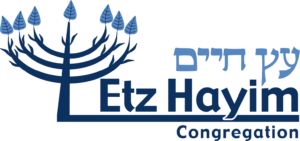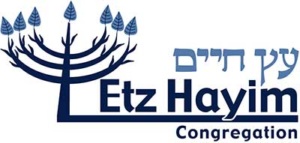Instructions for counting the omer are found on our Omer Overview Page. You can find the specific blessing for today at chabad.org.
We’re dedicating a new Sefer Torah on the first day of Shavuot. In honor of this joyous occasion, we’re using the counting of the Omer to take a whirlwind trip through the Torah
Today’s portion is Ki Tavo from the book of Deuteronomy. Today’s insight was generously provided by Glenn C.
Verses of note: Deuteronomy, 26:1 – 11
What caught your attention in this parashah?
Ki Tavo is my Bar Mitzvah parsha. The first eleven verses of chapter 26, and particularly verses five through nine, caught my attention because I thought I learned about them in college while studying parts of the Torah from a secular perspective. I thought I learned that these verses are among the oldest written material in the Torah. Even if that is not the case, these verses are extremely powerful for the breadth of the history they cover and because they show how we collectively started from the extreme anguish of slavery in Egypt and then finished with the joy of arriving in the covenanted homeland.
What’s one explanation for these verses?
The lesson I have drawn from studying verses one through eleven and some related commentary is that the beginning of my Bar Mitzvah parsha was far more significant than I realized. I now know that verses five through nine are a prayer that was the centerpiece of an important annual “First Fruits” ceremony. Commentary in the Etz Hayim Torah and at www.chabad.org show the power of these verses from a formal perspective. The words of this “farmer’s prayer” are prescribed specifically in the parsha A commentator stated that this prayer is one of only two in the entire Torah where the words are specifically prescribed for worshipers who are not Kohannim.
From a more substantive perspective, I think the farmer’s prayer, and Ki Tavo in general, emphasize themes that connect directly to the Omer, to the festivals of Pesach and Shavout, and to Rosh Hashonah. Calling it a “farmer’s prayer” marginalizes it in our modern minds because so few people farm. But I suspect that virtually the entire community of ancient Hebrews was involved in agriculture, and would have therefore recited the prayer, although I don’t know the extent to which women participated in the service. Because agriculture is central to the reasons for counting the Omer and celebrating Shavuot, the farmer’s prayer points toward those important rituals. It also provides a poetic summary of perhaps the seminal event in Jewish history, G-d’s rescue of us from slavery in Egypt. Finally, Ki Tavo is read soon before Rosh Hashonah and it seems fitting that the farmer’s prayer reminds us of the great benefits that G-d’s grace has bestowed upon us: the promise of the Covenant; the deliverance from Egypt; and, the fulfillment of the Covenant when we “enter[ed] the land that the Lord your God is giving you as a heritage,” Deuet. 26:1.


